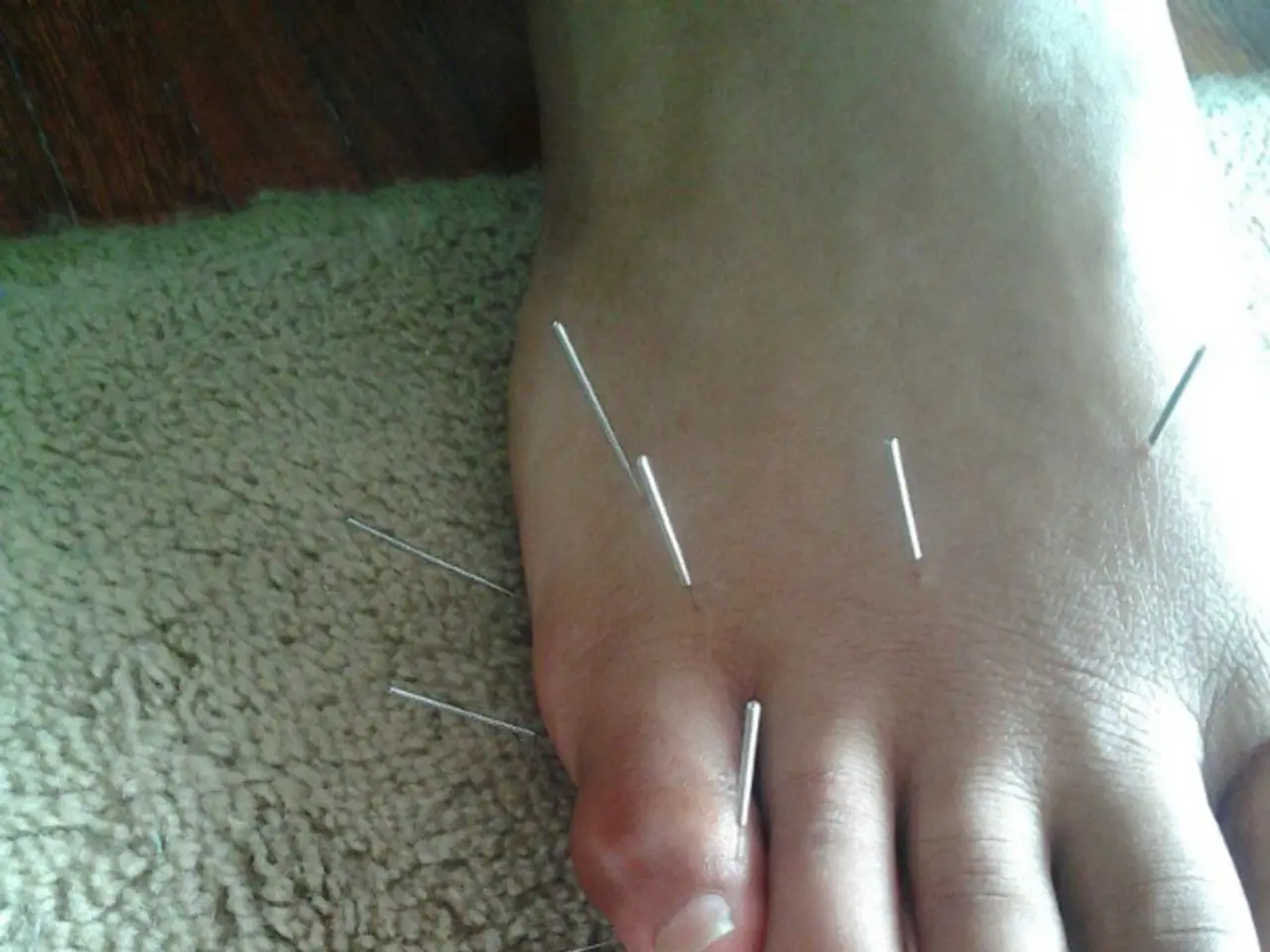Groin Lymphoma: Signs, Origins, Identification, and Remedies
Groin Lymphoma: Symptoms, Diagnosis, Treatment, and Outlook
Groin lymphoma is a type of cancer that affects the lymphatic system, specifically the lymph nodes in the groin area. The most common symptom of this condition is a painless swelling or lump in the groin [1][3][5]. Other symptoms can include pain, discomfort, fatigue, night sweats, weight loss, and low-grade fever [3][5].
Diagnosing groin lymphoma typically involves a combination of tests. A doctor will first perform a physical examination, paying close attention to the groin area for signs of swelling or lumps. Blood tests may also be conducted to assess blood cell counts and organ function [1][4]. However, the definitive diagnosis requires a lymph node biopsy, where a sample is taken either by needle or surgical removal (sometimes guided by imaging like a CT scan) to examine the tissue microscopically [1][4]. Immunophenotyping, a laboratory test that helps classify and diagnose different types of lymphoma, may also be used [1].
Treatment options depend on the lymphoma type and stage but often include chemotherapy, immunotherapy (e.g., monoclonal antibodies), radiation therapy, and sometimes stem cell transplant. Treatment is tailored based on lymphoma aggressiveness, spread, and patient health. For example, diffuse large B-cell lymphoma (a common non-Hodgkin lymphoma type) is treated with combination chemotherapy and immunotherapy [1][3][5].
The stages of non-Hodgkin lymphoma are determined by the extent of the disease within the body. The Ann Arbor system is commonly used, ranging from Stage I (single lymph node region or single extralymphatic site) to Stage IV (diffuse or disseminated involvement of one or more extralymphatic organs) [1][4].
The outlook for people with lymphoma in the groin will depend on several factors, including the stage and type of the disease as well as a person's overall health. The prognosis for non-Hodgkin lymphoma is fair with early detection and treatment, with a 5-year survival rate of 70-85% for follicular lymphoma and 50-60% for large B cell lymphoma [1]. With appropriate treatment, many people with lymphoma in the groin can achieve complete remission. It's important to note that Hodgkin lymphoma has a different prognosis, with a 5-year survival rate of 85-90% with early diagnosis and appropriate treatment [1].
In conclusion, groin lymphoma is a serious condition that requires medical attention. If you experience any unusual swelling or lumps in your groin area, it's essential to seek medical advice promptly. Early diagnosis and treatment can significantly improve the outlook for those affected.
References: [1] Lymphoma Action. (2021). Lymphoma: Types, symptoms, diagnosis, and treatment. Retrieved from https://www.lymphoma-action.org.uk/lymphoma-information/types-of-lymphoma/non-hodgkin-lymphoma/ [3] Mayo Clinic. (2021). Lymphoma in the groin: Symptoms, diagnosis, and treatment. Retrieved from https://www.mayoclinic.org/diseases-conditions/lymphoma/in-depth/groin-lymphoma/art-20047583 [4] American Cancer Society. (2021). Non-Hodgkin lymphoma staging. Retrieved from https://www.cancer.org/content/cancer/en/guide/cancer-type/non-hodgkin-lymphoma/staging.html [5] National Cancer Institute. (2021). Non-Hodgkin lymphoma treatment (PDQ®)–Health Professional Version. Retrieved from https://www.cancer.gov/types/lymphoma/hp/non-hodgkin-lymphoma-treatment-pdq#section/_115
Read also:
- Exploring Botox as a Treatment for Interstitial Cystitis: Insights, Adverse Effects, and Further Details
- Linking brain weakness and cognitive decline: An examination of the potential relationship
- Is it Possible that Stem Cells Improve Joint Durability and Mobility during Senior Years?
- Is a Measles Booster Vaccination Required? You Might Be Shocked by the Response





